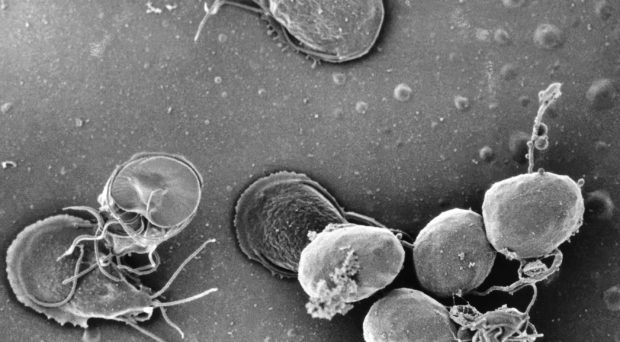
Giardiasis and intestinal worms: two neglected tropical diseases
Giardiasis, caused by the parasite Giardia duodenalis (also known as Giardia intestinalis or Giardia lamblia), has been associated with malnutrition and poor growth in young children. It is an infectious disease that can cause acute or chronic gastrointestinal symptoms. Soil-transmitted helminths, otherwise known as intestinal worms, can also contribute to impaired growth and development in children. Both Giardiasis and soil-transmitted heminths affect hundreds of millions of people worldwide. And both can be considered “neglected tropical diseases”, which by their nature disproportionately affect people living in impoverished conditions, contributing to and perpetuating the poverty cycle.
Complexities in control
Intestinal worm infections are usually controlled through large-scale deworming programs, in which deworming medications are delivered to at-risk populations in areas where the disease is endemic. Interestingly, the drugs delivered in these deworming programs can be used, in higher doses, to treat Giardia infections. However previously, only very little has been known about what happens to Giardia infections in the context of regular repeated deworming.
New findings, recently published in Parasites & Vectors, showed that in communities in rural Timor-Leste, prevalence of Giardia infections did not change throughout 2 years of a community-wide deworming program, suggesting that the drugs are either not effective against Giardia at the doses used in deworming, or that reinfection with Giardia was happening very rapidly after treatment.

What about WASH?
Water, sanitation and hygiene (WASH) is critical in the transmission of both Giardia and intestinal worms, because both are transmitted through exposure to human feces. However, reducing infections through WASH interventions in communities in low-income settings has proven to be challenging.
Indeed, the findings of this new research showed that Giardia infections remained high despite a community-based WASH intervention, likely as a result of ongoing “open defecation” (defecation outdoors in the open environment) despite the intervention. The key factors driving transmission in the study population were exposure to young children, household crowding, seasonality (infections were more common in the rainy season), and co-infections with helminths, with hookworm infection appearing to be protective against Giardia infection.
Where to from here?
These new findings highlight that Giardia is an important parasite to consider in the context of large-scale deworming programs in low-income settings. Such programs may offer an opportunity for health workers to educate local communities about Giardia, how it is transmitted, and how to seek treatment. More research is needed to further investigate the relationship between Giardia and intestinal worm infections, and the impact of regular deworming on Giardia infections.
Ongoing efforts are also needed within the WASH sector to develop innovative, sustainable, locally-tailored approaches to improve WASH conditions as a means to reducing parasitic diseases. Building on existing knowledge with ongoing, community-centred research will enable tailoring of control efforts to maximise benefits to the hundreds of millions of people infected by these neglected tropical diseases.

Comments